After the winter break, the first on-track Formula 1 action of 2019 has been completed after four full days of testing at the Circuit de Barcelona-Catalunya in Spain. All ten teams have been involved, with both full-time and reserve drivers getting track time from Monday to Thursday.
There's still almost a month to go until the Australian GP, but the beginning of the new F1 season feels tantalisingly close. As always, there's a lot to talk about the teams involved in the pinnacle of Motorsport. From a notable absence to mechanical issues to some blistering lap times, here are 5 of the biggest stories that have developed from the Montmelo track!
#1 – Ferrari Fastest...for now
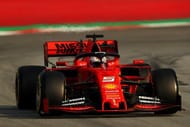
While Mercedes quietly go about their testing schedule and sandbag (purposely doing slow laps to make the car appear slow), Ferrari usually go for headline fastest laps to please their sponsors. In addition, Ferrari have also been fastest during most of the pre-season tests since 2015, and they've won no championships in that time. That being said, though, they arguably had the fastest car at the beginning of both of the last two seasons, culminating in back-to-back wins in Melbourne.
2019 is appearing to follow the same trend, as when you factor in Pirelli's estimates for differentials in tyre performance, the Scuderia comes out on top. Nico Hulkenberg has set the fastest lap time of testing so far (1:17.393), but that was on the grippiest tyre available (the C5). When you've factored in the deltas, Charles Leclerc has set the quickest lap, a virtual 1:16.846. Even more encouraging is that their nearest challenger, Antonio Giovinazzi, is over half a second behind Leclerc's time, a yawning chasm in F1 terms.
Of course, this is far from an exact science, but the signs are looking positive for the team from Maranello.
#2 - Honda's Engine Looks Reliable
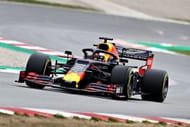
To say that Honda's return to Formula 1 has been a baptism by fire is a masterpiece of understatement, but the Japanese manufacturer quietly went about improving their engine with Toro Rosso last year. 2019 is the first year that Red Bull use the Honda power unit, after a messy and lengthy divorce with Renault.
The RBR chassis is usually one of, if not the, best on the grid, but their engine power and reliability have traditionally been their Achilles heel in the V6 era, one of the many reasons their aforementioned split with Renault was in such bad taste.
Their decision to run Honda engines in 2019 is both the main cause for both optimism and pessimism, uncertainty over power output being the reason behind this. However, so far, the situation appears rosy, with Toro Rosso and Red Bull accumulating over 450 laps each. Even if the grunt isn't on the same level of the Mercedes and Ferrari motors, the Honda is reliable, something that the Renault engine certainly wasn't in 2018.
#3 - Haas' Reliability Could be Troublesome
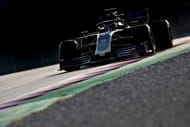
Haas have improved their constructors' standings year-on-year since joining Formula 1 in 2016, so hopes are high for the American team going into 2019. They began the previous season with the fourth fastest car, but failed to capitalise on this thanks to some embarrassing amateur errors.
We only know a car's true pace once the first Grand Prix qualifying session has been completed, but some things though, such as reliability, are impossible to mask. Wednesday was a hard day for Romain Grosjean and Pietro Fittipaldi, (the team's test driver) as the VF-19 suffered three mechanical failures, which limited the team's running.
Sure, there were no further issues the following day, and one of the goals of testing is to find and fix faults in the car, but it isn't confidence-inspiring. It can't be engine related, as the Ferrari and Alfa Romeo have been bulletproof so far, so the Haas chassis had a fundamental problem, which has hopefully now been resolved. If it's not, though, then a slow start could be on the cards from mid-March.
#4 - Alfa Romeo Look Promising
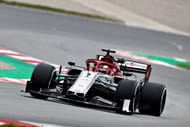
Remember how I said that Antonio Giovinazzi was Ferrari's closest challenger in terms of adjusted lap time? Well, Alfa Romeo's first Formula 1 sessions since the 1980's have been very promising. Not only has their pace been impressive, but Alfa have also racked up a very impressive distance in terms of overall laps completed, with little mechanical trouble. Overall high mileage is arguably the most important thing to achieve in testing, as the more laps you complete, the more stress you put the machinery through and more likely you are to find any faults.
Aside from Mercedes and Ferrari, Alfa Romeo have completed the most laps of testing so far, 507 in total, over 7.5 Grands Prix distances. What's even more impressive, though, is their new line-up, Kimi Raikkonen and Giovinazzi being the perfect blend of youth and experience. No wonder expectations are high for the team that's on a sharp upwards trend since the start of last season, with some believing they could become the new "best of the rest" team.
#5 - Williams Look Worryingly Slow
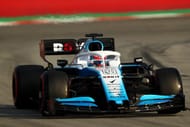
2018 was a year to forget for Williams, but 2019 has got off to a very poor start for the team from Grove. Their lack of running is also a huge issue, the FW42 seeing no track time on Monday nor Tuesday, before finally getting out of the garage on Wednesday afternoon.
The British outfit are effectively two-and-a-half days behind their competition, ground that they've done a poor job of catching up. In the first two days alone, Ferrari rounded the Circuit de Catalunya 326 times, a distance of over 1,500 kilometres, or around the same length from London to Budapest. With over a quarter of their available testing time wasted, 23 laps from George Russell on Wednesday and a combined 65 tours on Thursday is very worrying.
Perhaps most concerning, though, is their lack of pace. While testing lap times are notoriously unreliable, the lap charts don't make for good reading. On Wednesday, Russell was clocking 1 minute 25's, while everyone else was consistently 5 seconds a lap faster. Thursday was better, but Robert Kubica and Russell were the slowest of all and over 1.5 seconds slower than anyone else.
Williams will need a much better second week if they're to raise morale and show that they can compete in Australia.
What do you think has been the most important thing we've learned during the first week of F1 testing? Let us know in the comments below!
